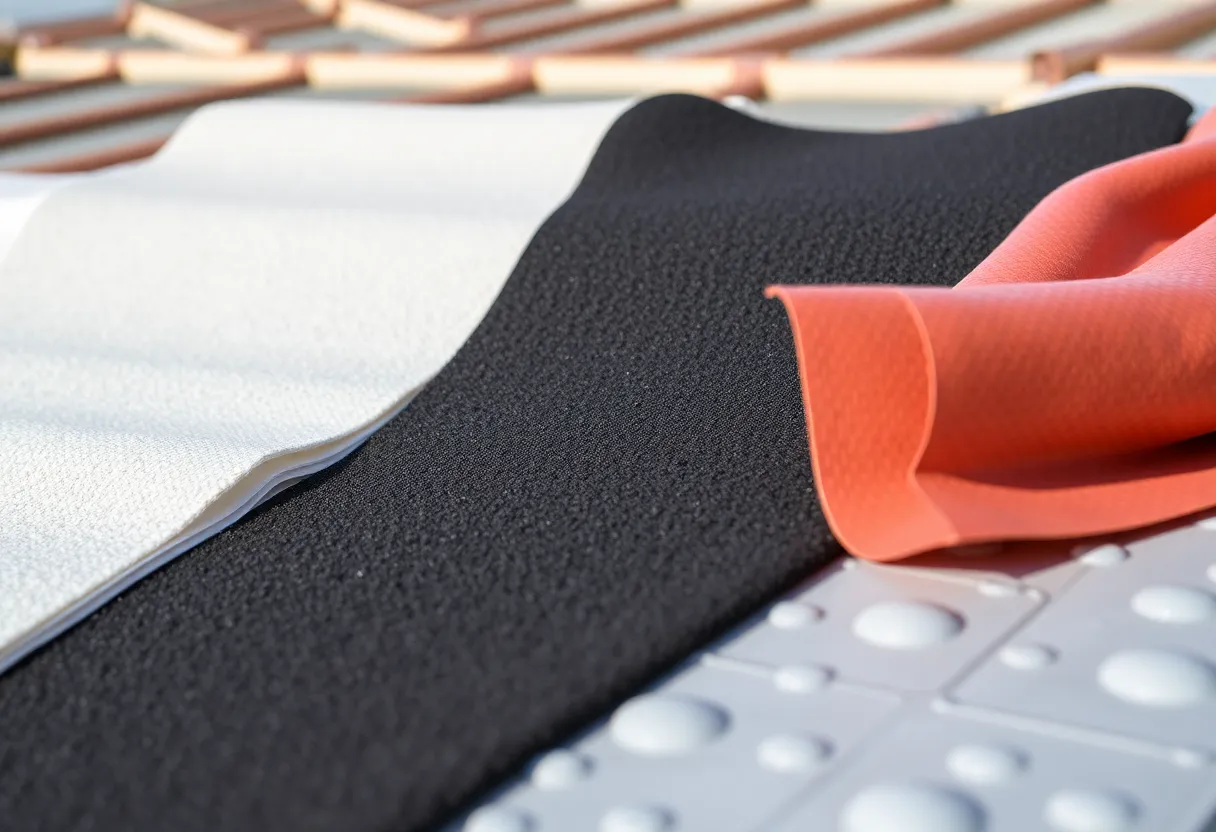How to Choose the Right Underlayment for Your Roofing Project: Tips for Success
Choosing the right underlayment for your roofing project is crucial for ensuring the durability and performance of your roof. The underlayment acts as a vital barrier against moisture, wind, and other elements that could jeopardize the integrity of your roofing system. This article outlines key factors to consider when selecting underlayment, ensuring you make an informed decision.
Understanding Roofing Underlayment
Roofing underlayment is a material installed below your primary roofing material, providing an additional layer of protection. Its primary functions include:
- Water resistance
- Heat insulation
- Reduce noise
- Increase longevity of the roofing system
Different types of underlayment serve specific purposes, so understanding these can guide you in choosing the right one for your project.
Types of Underlayment
1. Felt Underlayment
Felt underlayment is one of the most common choices, made from organic or fiberglass materials coated with asphalt. It comes in various weights, with heavier felt offering greater durability and moisture resistance. However, it can be less effective in very wet environments.
2. Synthetic Underlayment
Synthetic underlayment is a modern alternative that provides excellent moisture protection and durability. It is lightweight, easy to install, and often resistant to tearing. Synthetic options are particularly advantageous for areas prone to high wind or heavy rainfall.
3. Rubberized Asphalt Underlayment
This underlayment incorporates rubberized asphalt, providing superior waterproofing capabilities. Rubberized products are ideal for low-slope roofs, valleys, and areas with heavy rainfall. They may be more expensive, but they offer extensive protection against leaks.
4. Ice and Water Shield
This specialized underlayment is designed to provide excellent protection in vulnerable areas like eaves and valleys. It adheres directly to the roof deck, creating a waterproof membrane that guards against ice dams and heavy rain.
Considerations for Choosing Underlayment
1. Climate
Your local climate significantly impacts the choice of underlayment. For instance, in regions with heavy snowfall or rainfall, opt for rubberized asphalt or synthetic underlayment for enhanced moisture protection. Conversely, lighter felt may suffice in arid climates.
2. Roofing Material
The type of roofing material you use also influences your underlayment choice. Shingle roofs typically require felt or synthetic, while metal roofs often pair well with high-performance synthetic underlayments. Always refer to manufacturer guidelines for compatibility.
3. Roof Slope
Roof slope can dictate whether you need a higher grade of underlayment. Low-slope roofs may need rubberized or a self-adhering membrane to prevent leaks, while steeper roofs might only necessitate traditional felt or synthetic.
4. Cost
Budget considerations play a vital role in underlayment selection. While synthetic and rubberized options may have a higher upfront cost, their durability and performance can save money on repairs in the long run. Analyze the cost-to-benefit ratio before making a decision.
Installation Tips for Success
1. Measure Accurately
Begin by accurately measuring your roof area to determine how much underlayment you will need. Purchase slightly more material than necessary to account for overlaps and waste.
2. Follow Manufacturer Guidelines
Each product comes with manufacturer installation guidelines. Adhering to these recommendations ensures the product performs as it should and retains any warranty options.
3. Consider Safety
When installing underlayment, prioritize safety. Use proper fall protection and safety gear. Ensure the ladder and roofing materials are secure before proceeding.
4. Work Methodically
Install the underlayment in sections, beginning at the bottom and layering upwards. Overlap the seams according to manufacturer instructions to prevent water intrusion. Securing the underlayment with appropriate fasteners will enhance its stability.
5. Inspect Before Covering
After installation, inspect the underlayment thoroughly for tears, gaps, or misplaced fasteners. Taking time for this final inspection can prevent issues once the roofing material is installed.
Conclusion
Choosing the right underlayment for your roofing project is essential for establishing a durable, high-performance roofing system. By understanding the types of underlayment available, considering local climate and roofing material, and following effective installation practices, you can ensure long-lasting performance for your roof. Making an informed decision today can be the key to protecting your home for years to come.





 Mays Contracting
Mays Contracting


